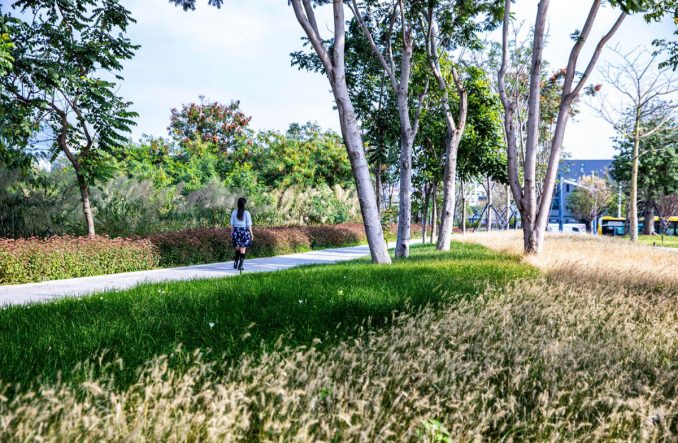
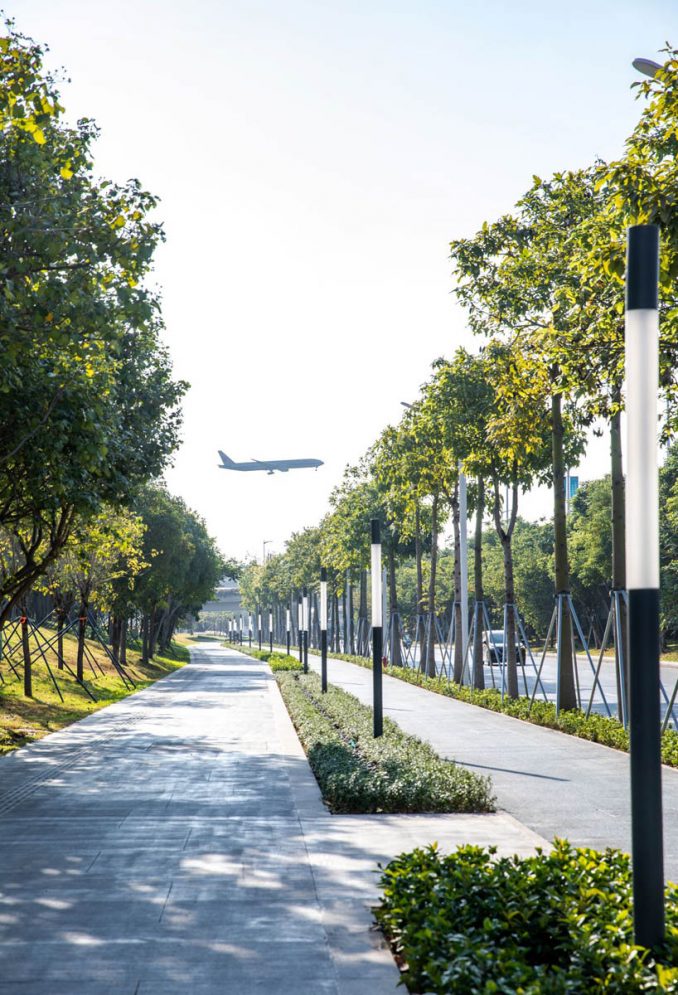
The Shenzhen Baoan International Airport (SZX) is one of the three primary airports that are part of the Greater Bay Area international aviation hub. This sprawling airport was officially opened in October 1991, with the futuristic International Terminal 3, designed by Studio Fuksas, opening in 2013. Terminal 3 was built to accommodate 45 million passengers a year. With that number of people moving through the terminal and the airport area, the impact and impression of its landscape on visitors and its importance in promoting Shenzhen could no longer be overlooked.
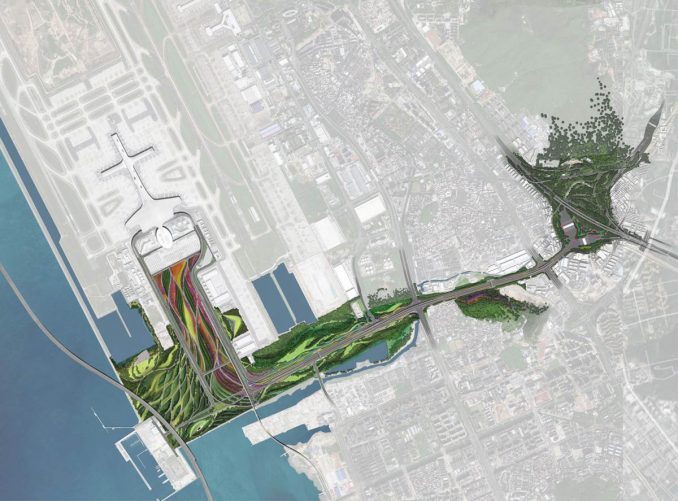
To celebrate the 40th Anniversary of Shenzhen, the airport authority organized a competition to upgrade the appearance of the Shenzhen Baoan International Airport to redefine the airport landscapes and environments holistically. Our multi-disciplinary team of architects, landscape architects, engineers and designers arrived at the concept of ‘Renewal’. This concept redefined and expressed the energy, vitality, and aspirations of Shenzhen through a holistic approach to the arrival and departure experience.
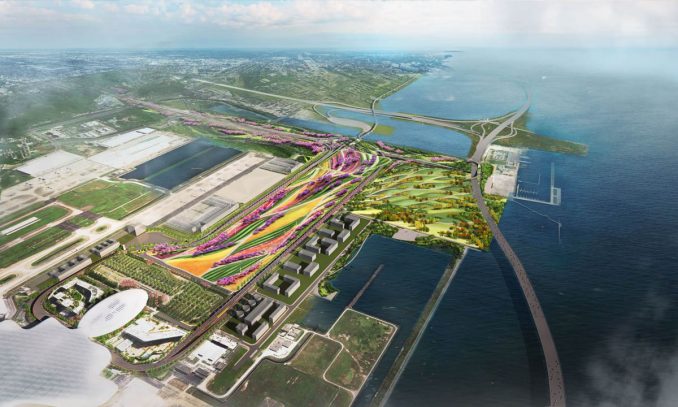
The design scope provided unique opportunities to look at the design for transportation access points, logistics and office facilities, the expressway and its treatment, the toll gates, the ferry terminal, and the public realm that connects them. The Shenzhen Airport is a massive transportation hub, accessible by automobile, bus, subway, ferry, and pedestrians, with hotel and other facilities near the terminal. This multi-layered accessibility created opportunities to maximize the airport experience. The team organized the airport’s spaces to work as a unified expression, choreographing the sequences and experiences of movement.
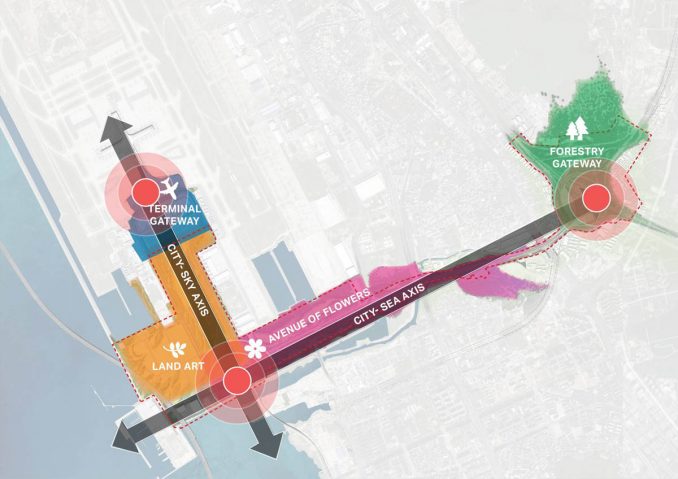
The overall design structure creates 2 axes and 4 zones, and 3 nodes organizing the airport environment into a series of coherent and cohesive architectural elements and landscape spaces. By considering the design as a way forward, we wanted to connect the airport to the city, the city to the community, and the community to nature.
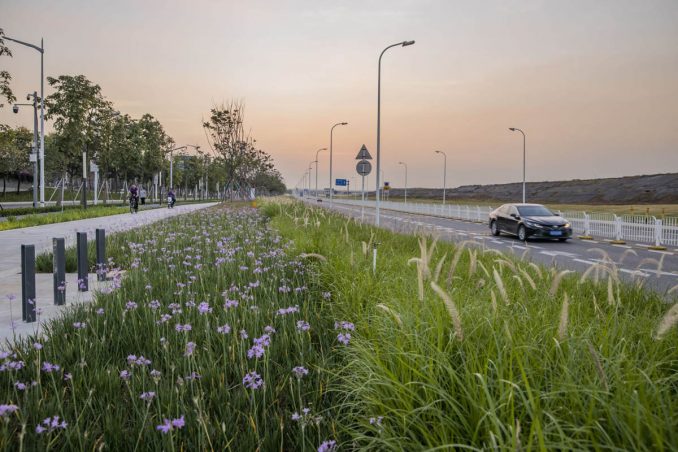
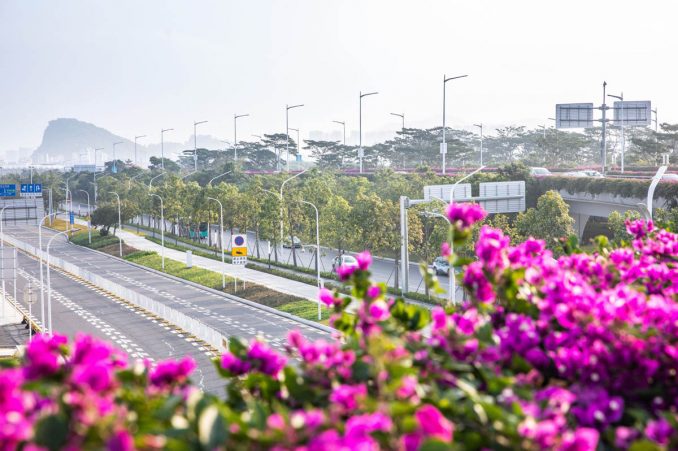
The Avenue of Flowers exemplifies our vision of vitality, ecology, and innovation, and employs Shenzhen’s sub-tropical botanical palette to express the city’s vibrancy. The design layers textures and colours for the streetscapes. The elevated roadways utilize purple and red bougainvillea as accents. Expressway columns at key junctions are clad and lit to highlight important gateways and traffic systems better. New pedestrian walkways and bicycle lanes are added to create more opportunities for mobility and porosity to the airport. Additional lighting and signage help build more accessible landscapes.
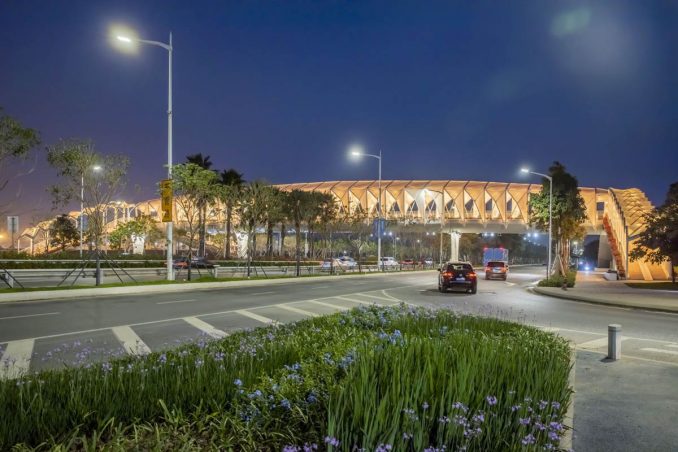
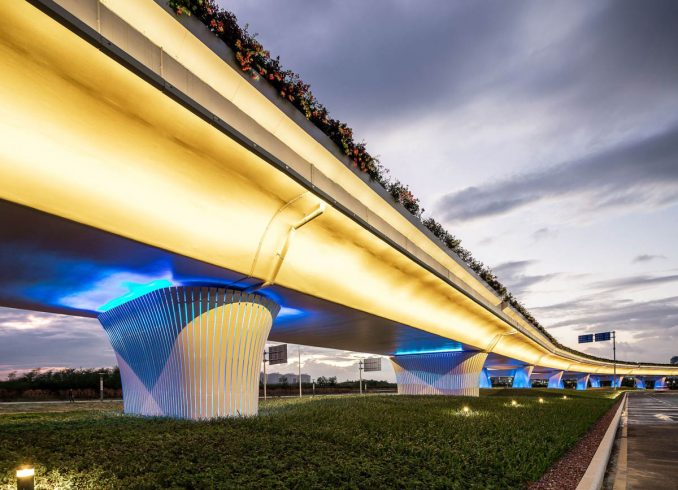
We looked to create a coherent ecology reconnecting the originally fragmented urban areas into an ecological system of bioswales, rain gardens, and catchment points that not only regenerate the landscape but protect against flooding. It significantly improved the ecological value of the environment and energized a green airport experience. The design of the planting emphasized restoration by retaining more than 20,000 existing trees, adding more than 1,500 new trees, and using up to 173 native species. The landscape design for the vibrant vegetation utilized native planting to express the richness of the local environment.
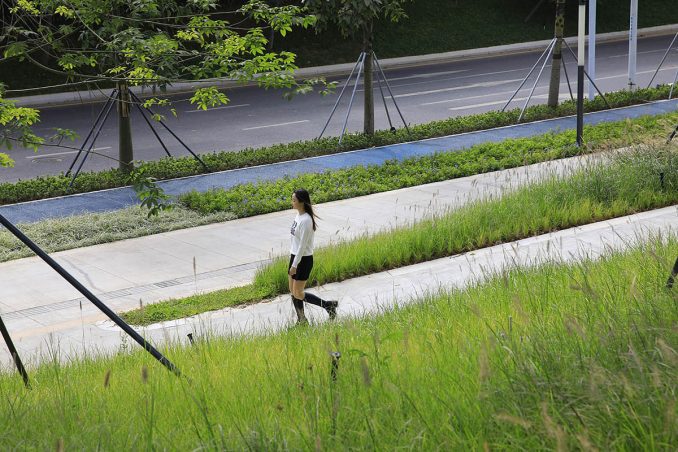
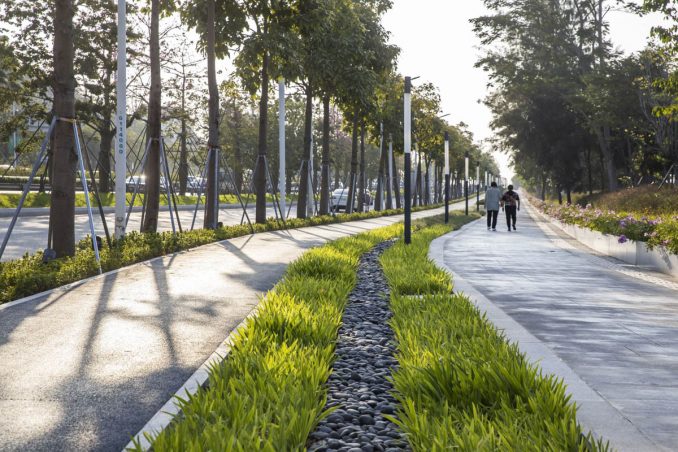
Our goal was to promote functional landscape spaces by constructing artful spatial patterns and integrated systems, and utilizing water and ecological connectivity. In redefining the potential of the airport landscape, our design serves to promote the value of the landscape and its resilient qualities as it connects the airport and the City of Shenzhen.
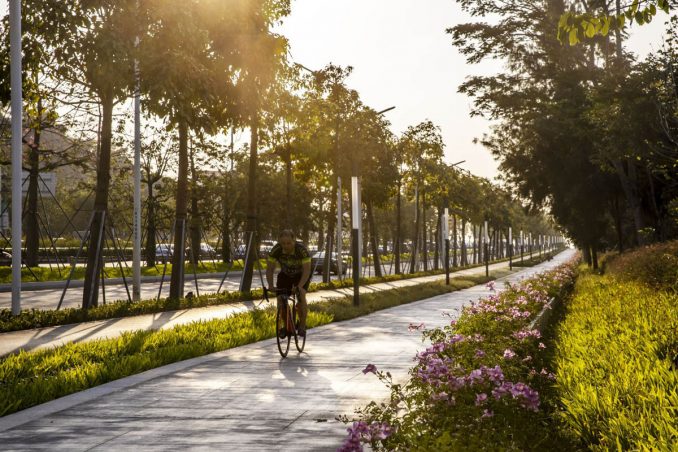
Shenzhen Baoan International Airport Renewal
Landscape architecture: AECOM
Lighting design: HDA Handu Lighting Design
Architectural design: Guangdong Architectural Design and Research Institute
Client: Shenzhen Bao’an Administration; Shenzhen Airport (Group) Co., Ltd; China Resources Land Limited
Images: Courtesy of AECOM
